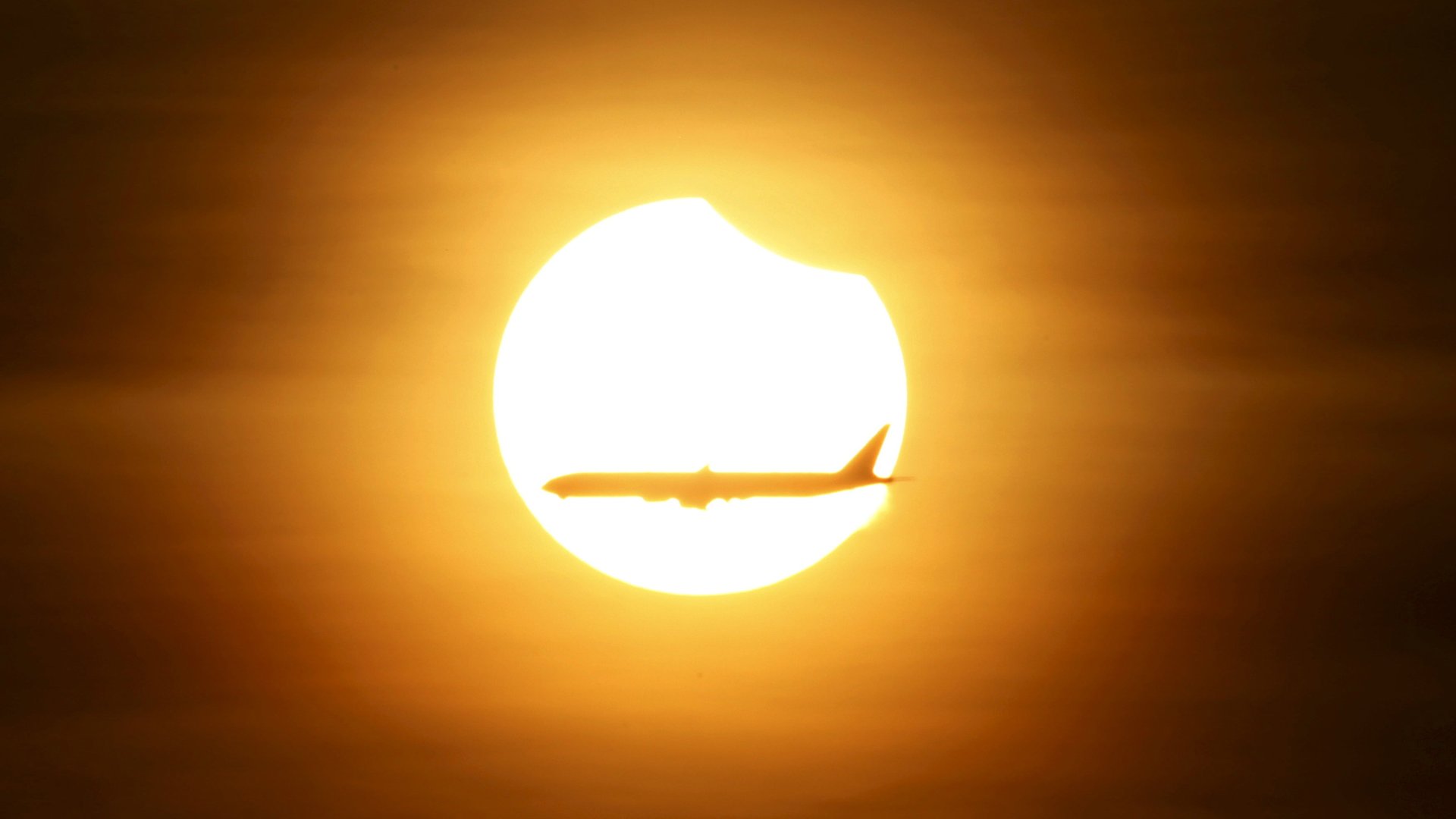Global warming could make flying even more awful than it is today
There could be yet another unwelcome side effect to global warming: bumpier airplane rides.


There could be yet another unwelcome side effect to global warming: bumpier airplane rides.
Higher amounts of carbon dioxide in the atmosphere could alter jet streams—narrow, high-altitude, channels of fast-moving air—and make severe turbulence more than twice as common by the middle of this century, according to Paul Williams, an atmospheric scientist at the University of Reading.
Jet streams are often the cause of what’s known as clear-air turbulence, which unlike thunderstorms or other severe weather, can appear suddenly and catch pilots by surprise. The jet streams form in areas where there are large temperature differences. The greater the temperature differences, the stronger the winds inside these high-altitude tunnels.
In a study published in Advances in Atmospheric Sciences on April 6, Williams used computer models and 21 turbulence measurement units (such as wind speeds and direction) to figure out the impact increased carbon dioxide would have on wintertime clear-air turbulence over the Atlantic Ocean at altitudes of 39,000 feet, a common cruising altitude for airplanes.
The prevalence of air turbulence in general would likely increase anywhere between 36% and 188%, Williams found. Light turbulence, which can certainly rattle nervous flyers, is usually nothing to be alarmed about. But wind shear so severe that it could ”catapult unbuckled passengers and crew” around the plane, could rise by 149%, Williams says.
Airlines and passengers have reason to be concerned. Air turbulence is the top cause of injuries in non-fatal airplane accidents, according to the International Air Transport Association, an industry group that represents airlines. More than 20 people were injured on a Shanghai-Toronto flight that encountered severe turbulence as it flew over Alaska in December 2015. Last August, two dozen passengers and crewmembers aboard a JetBlue flight were sent to the hospital after their Boston-Sacramento flight was diverted due to extreme turbulence.
Pilots often can’t simply avoid turbulence, especially the clear-air variety which comes with little or no warning. Pilots provide turbulence conditions reports to fellow captains, but that method is highly subjective because passengers on smaller planes feel bumps in the air more than passengers on a jumbo jet. Some researchers say a better system would be to use airplane sensors to more collect more objective data on potential turbulence, and use it to make predictions in real time. Carriers like American Airlines and Alaska Airlines have been experimenting with such sensors.
Williams’s research is just a first foray into this field of study. He focused on a small, but frequently traveled, area during one season, and it’s not yet clear how more carbon dioxide in the atmosphere would affect flights in other parts of the world and at different times of the year.
“My top priority for the future is to investigate other flight routes around the world,” Williams says. ”We also need to investigate the altitude and seasonal dependence of the changes, and to analyze different climate models and warming scenarios to quantify the uncertainties.”